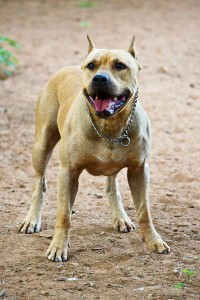You are here
Being told your mistaken and punished all the time does nothing for your confidence other than slowly wear it away. Your dog is the same. It’s all about confidence. So how do you correct your dog without deteriorating confidence?
You avoid conflict. Your dog doesn’t want to be corrected anymore than you want to give a correction. You need to remember that a correction is punishment for unwanted behavior. But it doesn’t need to be this way. For starters, you define bad behavior and your dog is at a great disadvantage for not being able to read your mind. So it is really imperative to teach your dog before contemplating administering a correction. In this way you can be positive that our dog knows what the right behavior is that is wanted, long before it ever needs to learn the consequence of what happens if an alternative behavior is exercised.
The higher you build your dog’s drive the better the K9 you will have. A correction is to drive as Kryptonite is to Superman. Corrections must be avoided at all costs because they chip away at your dogs confidence and makes your dog unsure of itself. It starts to doubt itself being able to predict an outcome. This self-doubting has dangerous consequences for your dog. Your dog must be positive that a behavior will attract the expected response. Only confidence will create this kind of self-belief in your dog. You want to eliminate the need for correction by planning ahead.
Always be aware of your surroundings and how these surroundings compete for your dog’s attention. Attention to your command is critical. Often a correction is seen as necessary because the dog is not focused on the handler because there are other natural distractions in the environment that are competing for attention. It is not uncommon for unscrupulous handlers to give their dog a very hard correction, just to get their dogs attention before entering a potentially distracting environment. Although they understand how the environment competes with their dogs attention, they fail in keeping their dogs drive high and now the handler need to work twice as hard to get the drive up to a high work performance level.
In Summary – Avoid corrections by being aware of the situations that will cause you to correct your dog and then take steps to take control of your dog’s focus with something it wants more than the external stimulus.
Categories
- Bite Work (3)
- Breeding (16)
- Drills & Tactics (13)
- Drive (7)
- Equipment (2)
- General (17)
- K9 Health & Fitness (49)
- K9 Search and Rescue Training (4)
- Law (5)
- Must Read (9)
- Personal Security (7)
- Problem Solving (14)
- Socialization (6)
- Springer (5)
- Uncategorized (10)
Calendar
April 2024 M T W T F S S « Nov 1 2 3 4 5 6 7 8 9 10 11 12 13 14 15 16 17 18 19 20 21 22 23 24 25 26 27 28 29 30

